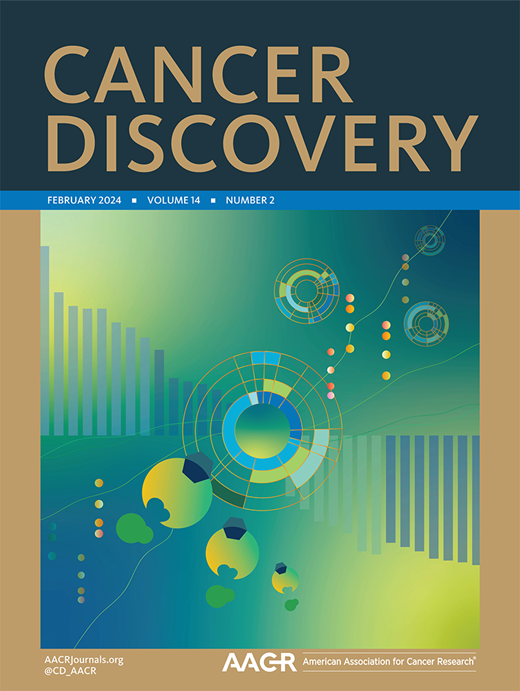p53 drives lung cancer regression through a TSC2/TFEB-dependent senescence program.
IF 33.3
1区 医学
Q1 ONCOLOGY
引用次数: 0
Abstract
Pharmacological restoration of p53 tumor suppressor function is a conceptually appealing therapeutic strategy for the many deadly cancers with compromised p53 activity, including lung adenocarcinoma (LUAD). However, the p53 pathway has remained undruggable, partly because of insufficient understanding of how to drive effective therapeutic responses without toxicity. Here, we use mouse and human models to deconstruct the transcriptional programs and sequelae underlying robust therapeutic responses in LUAD. We show that p53 drives potent tumor regression by direct Tsc2 transactivation, leading to mTORC1 inhibition and TFEB nuclear accumulation, which in turn triggers lysosomal gene expression programs, autophagy, and cellular senescence. Senescent LUAD cells secrete factors to recruit macrophages, precipitating cancer cell phagocytosis and tumor regression. Collectively, our analyses reveal a surprisingly complex cascade of events underlying a p53 therapeutic response in LUAD and illuminate targetable nodes for p53 combination therapies, thus establishing a critical framework for optimizing p53-based therapeutics.p53通过TSC2/ tfeb依赖性衰老程序驱动肺癌消退。
p53肿瘤抑制功能的药理恢复在概念上是一种吸引人的治疗策略,用于许多p53活性受损的致命癌症,包括肺腺癌(LUAD)。然而,p53通路仍然是不可治疗的,部分原因是人们对如何在没有毒性的情况下驱动有效的治疗反应了解不足。在这里,我们使用小鼠和人类模型来解构LUAD中强大治疗反应的转录程序和后遗症。我们发现p53通过直接激活Tsc2,导致mTORC1抑制和TFEB核积累,进而引发溶酶体基因表达程序、自噬和细胞衰老,从而驱动肿瘤的有效消退。衰老的LUAD细胞分泌因子募集巨噬细胞,促进癌细胞吞噬,肿瘤消退。总的来说,我们的分析揭示了LUAD中p53治疗反应背后令人惊讶的复杂级联事件,并阐明了p53联合治疗的可靶向节点,从而为优化基于p53的治疗方法建立了关键框架。
本文章由计算机程序翻译,如有差异,请以英文原文为准。
求助全文
约1分钟内获得全文
求助全文
来源期刊

Cancer discovery
ONCOLOGY-
CiteScore
22.90
自引率
1.40%
发文量
838
审稿时长
6-12 weeks
期刊介绍:
Cancer Discovery publishes high-impact, peer-reviewed articles detailing significant advances in both research and clinical trials. Serving as a premier cancer information resource, the journal also features Review Articles, Perspectives, Commentaries, News stories, and Research Watch summaries to keep readers abreast of the latest findings in the field. Covering a wide range of topics, from laboratory research to clinical trials and epidemiologic studies, Cancer Discovery spans the entire spectrum of cancer research and medicine.
 求助内容:
求助内容: 应助结果提醒方式:
应助结果提醒方式:


